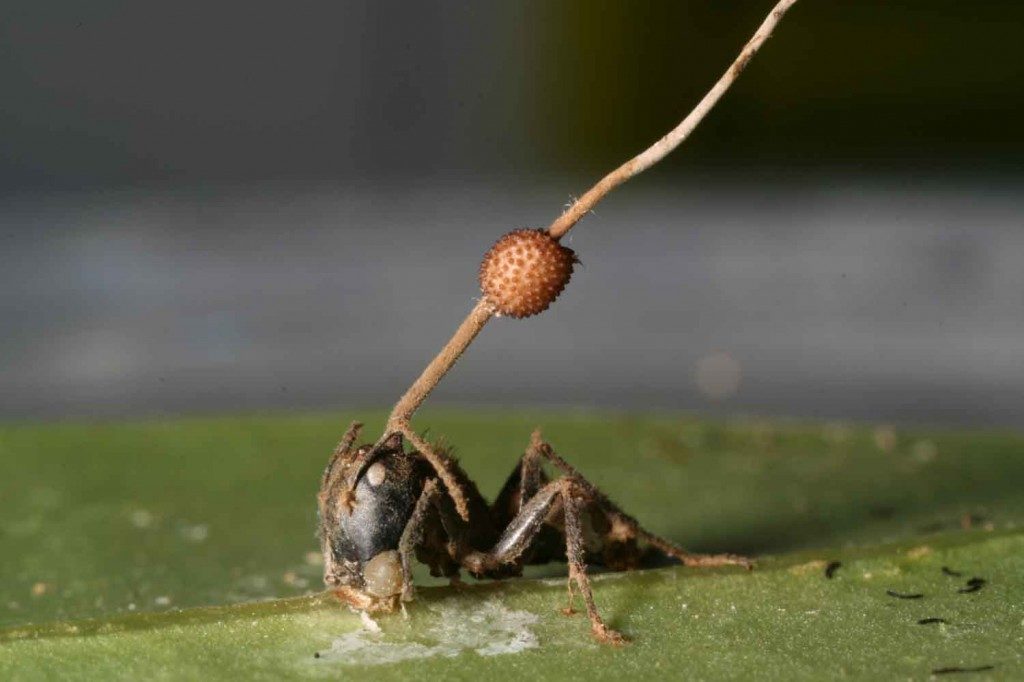Ophiocordyceps unilateralis is a parasitoid fungus that infects ants such as Camponotus leonardi, and alters their behavior in order to ensure the widespread distribution of its spores. The fungus’s spores enter the body of the insect likely through the cuticle by enzymatic activity, where they begin to consume the non-vital soft tissues. Yeast stages of the fungus spread in the ant’s body and presumably produce compounds that affect the ant’s brain and change its behaviour by unknown mechanisms, causing the insect to climb up the stem of a plant and use its mandibles to secure itself to the plant. Infected ants bite the leaf veins with abnormal force, leaving telltale dumbbell-shaped marks. A search through plant fossil databases revealed similar marks on a fossil leaf from the Messel pit which is 48 million years old. The fungus then kills the ant, and continues to grow as its mycelia invade more soft tissues and structurally fortify the ant’s exoskeleton. More mycelia then sprout out of the ant, and securely anchor it to the plant substrate while secreting antimicrobials to ward off competition. When the fungus is ready to reproduce, its fruiting bodies grow from the ant’s head and rupture, releasing the spores. This process takes 4 to 10 days. The changes in the behavior of the infected ants are very specific, giving rise to the term zombie ants, and tuned for the benefit of the fungus. The ants generally clamp to a leaf’s vein about 25 cm above the ground, on the northern side of the plant, in an environment with 94-95% humidity and temperatures between 20 and 30 °C.
Ophiocordyceps unilateralis
